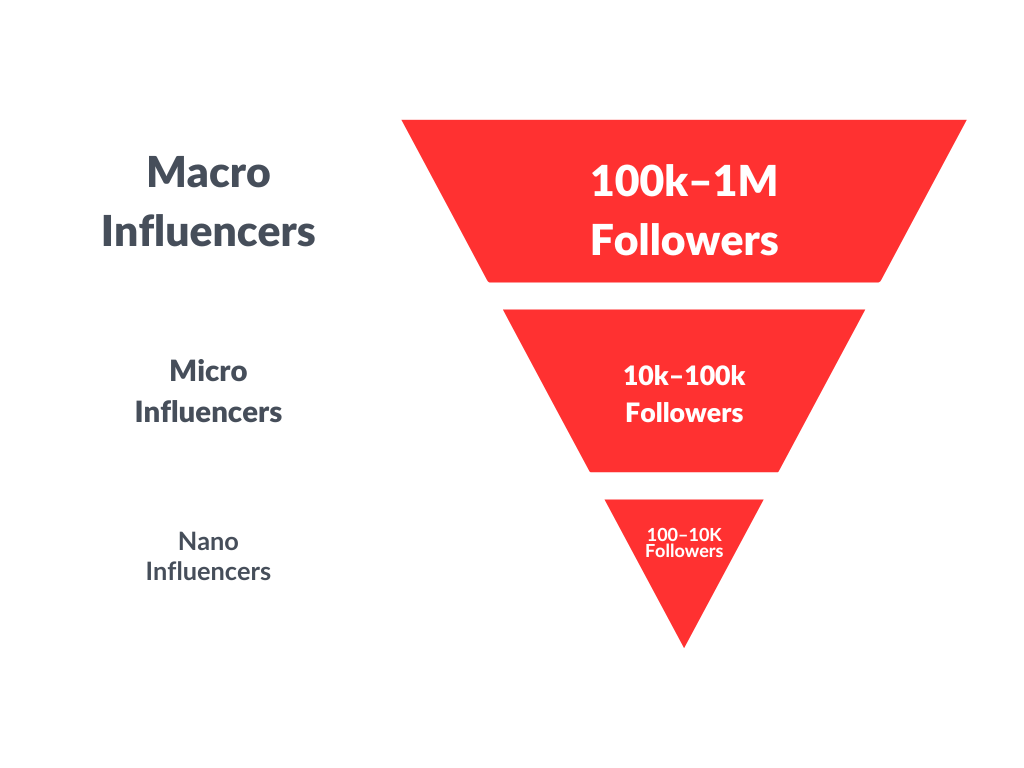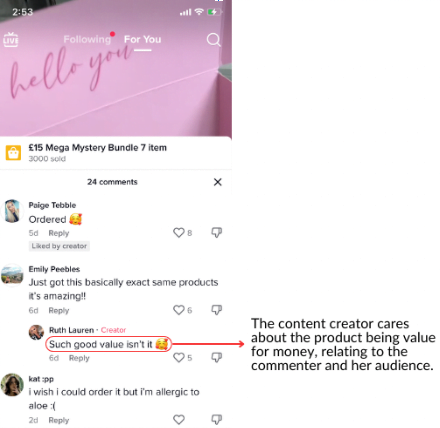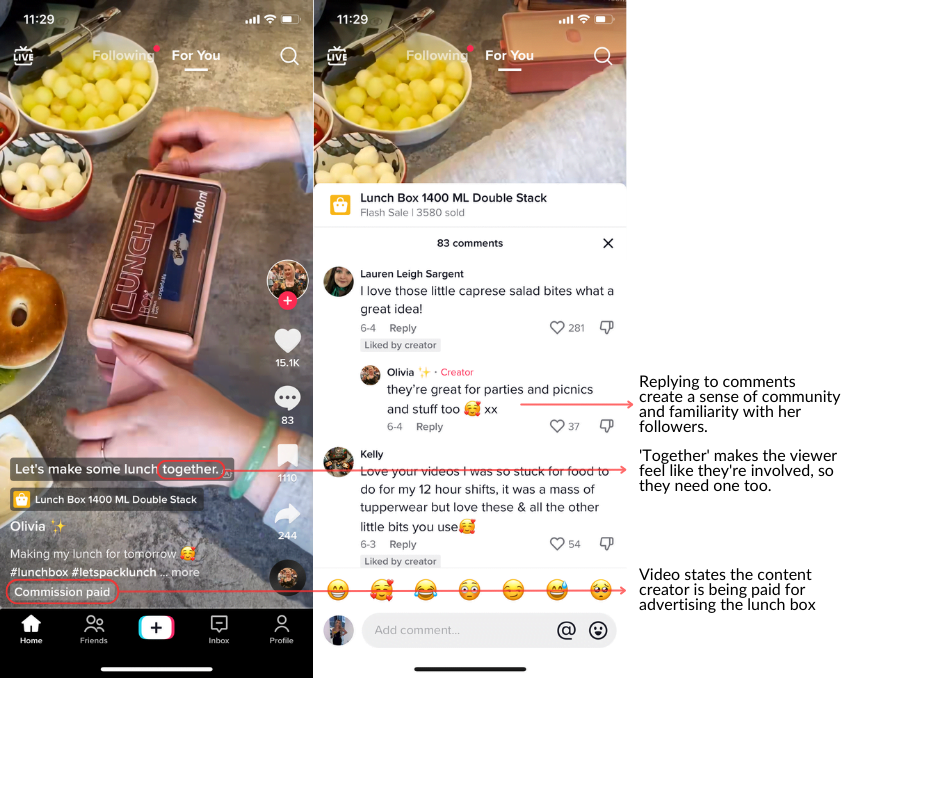In the ever-changing landscape of digital marketing, businesses are always searching for more effective ways to connect with their target audience and broaden their brand’s reach.
Influencers can be broken down into three main tiers:

Whilst macro (popular) influencers and celebrities dominate influencer marketing, micro-influencing is on the rise.
Social media platforms like TikTok rely solely on user-generated content, making paid collaborations more accessible. Because of this, micro-influencers are becoming an increasingly popular aspect of businesses’ digital marketing strategies.
In this blog, we will delve into the influence of smaller content creators and explore why micro-influencers are a wise choice for your business.
1. They Are Reliable and Trustworthy
Micro-influencers are typically more reliable and trustworthy than their macro-influencer counterparts. They can more easily connect with their audience, which is smaller, on a personal level, to create more tailored content, unlike a distant and unreachable celebrity.
They are often seen more as a peer; not above or better than the follower, making them more relatable and, as such, trusted. They are more genuine with posts and can relate with their viewers.
Ruth is promoting a mystery beauty box on TikTok:

Micro-influencers, like Ruth, actively engage in conversations, respond to comments, and offer personalised advice. This accessibility further enhances the sense of relatability and builds a stronger bond with their audience. The direct and genuine interactions fostered by micro-influencers create a feeling of connection and community, strengthening the trust between them and their followers.
Micro-influencers prioritise authenticity over perfection, showcasing a more realistic and attainable lifestyle. Their content feels relatable because it reflects the genuine moments and emotions that their audience can identify with. Ruth appreciates the value of money, therefore relating to her viewers and better influencing them to buy the mystery bundle.
2. Niche Targeting
Micro-influencers focus on specific products or topics that closely resonate with their audience, making their marketing efforts more effective. It is because they have a more in-depth knowledge of what they are promoting.
They create content with their community of followers in mind, meaning more thought and genuine interest goes into their recommendations. They usually care more about what they influence, having a smaller following, unlike their macro-influencer counterparts, who have a broader reach.
Having a better understanding of products or topics can lead to more trust, generating more sales.
Their ability to tap into a highly targeted audience allows them to connect with individuals with a genuine interest in their niche, making them an effective marketing tool for reaching specific demographics and achieving valuable brand exposure.
3. Cost-Effective
Micro-influencers offer a cost-effective solution in the world of influencer marketing. Unlike macro-influencers or celebrities who demand high fees, micro-influencers charge lower rates to collaborate.
This affordability allows brands with limited budgets to engage multiple micro-influencers and diversify their influencer outreach. It means they can reach different demographics and niche markets.
Despite the lower cost, micro-influencers maintain quality and effectiveness. They have cultivated genuine relationships with their followers resulting in higher engagement and trust.
Using the collective influence of micro-influencers amplifies brand reach without compromising the budget.
According to Find Your Influencer, the typical per-post cost for a micro-influencer with 10-50k followers is £250-£600, compared to £1000-1700 for macro-influencers.
Having a balance between cost and impact is essential in influencer collaborations. By incorporating micro-influencers into the marketing strategy, brands can achieve optimal results by maximising their resources and connecting with their audiences on a more personal level.
4. Higher Engagement
Whilst macro-influencers have a higher following, micro-influencers excel with engagement and follower-to-sales conversion rates. Their smaller audience fosters a sense of community, connecting them to the content creator. Also, having fewer followers allows the influencer time to interact with their audience, resulting in higher engagement rates.
Unlike macro-influencers who may struggle to keep up with the sheer volume of comments and messages they receive, micro-influencers can engage in more meaningful interactions. They actively respond to comments, address questions, and participate in authentic conversations with their followers.
For example, on TikTok, Olivia creates cooking and home content, generating a following of like-minded people who also enjoy cooking. These followers are more inclined to buy a lunch box to store their meals.

This level of engagement creates a genuine interest in the content they share, including the brands they collaborate with. Olivia genuinely enjoys using this product and wants her followers to as well.
Their followers view them as relatable individuals rather than distant celebrities, making them more receptive to brand recommendations and promotions.
Their ability to foster meaningful interactions and generate genuine interest in brands makes them valuable assets for any marketing campaign. By collaborating with micro-influencers, brands can tap into their engaged following and build successful relationships with their target audience.
5. Authentic User-Generated Content
As I have previously mentioned, micro-influencers are good at interacting with their followers and initiating user-generated content (UGC).
Content creators frequently involve their followers in the content creation process, by recording video requests and encouraging them to share their opinions or personal experiences on related topics through comments.
For example, Carrie is a micro-influencer promoting Tatti Lashes on TikTok:

A viewer requested the first video in response to a comment on a previous video. She then created another video from a comment on this video.
Responding to comments and interacting with her viewers allows her to get a sense of what content her viewers want, leading to more targeted and engaging videos.
UGC surrounding your brand or product provides a genuine and unfiltered perspective, enabling potential customers to see real people enjoying and endorsing your brand. This social proof can be immensely powerful in building trust and credibility.
When consumers see content from regular users like themselves, they are more likely to trust the authenticity of the content and be more positively influenced.
Their followers feel a personal connection and therefore more inclined to participate and contribute to the content.
Micro-influencers offer a powerful and cost-effective solution for brands seeking to make an impact in the world of influencer marketing.
If you include micro-influencers in your marketing plan, you can effectively target specific audience groups while staying within your budget.
Whether you’re an established brand or a startup, embracing the influence of micro-influencers can unlock untapped potential and drive long-term results in sales.




